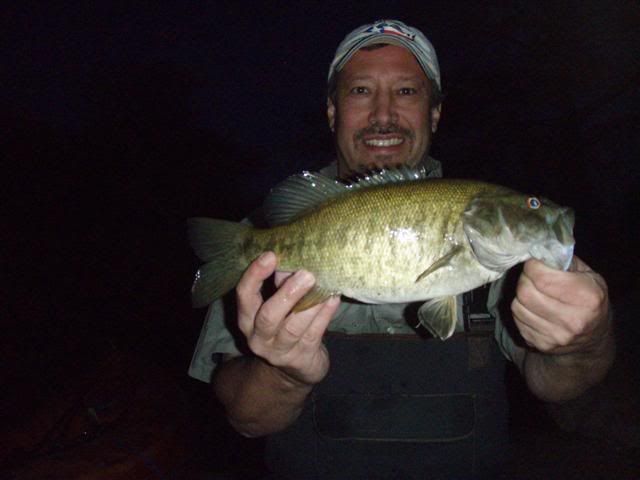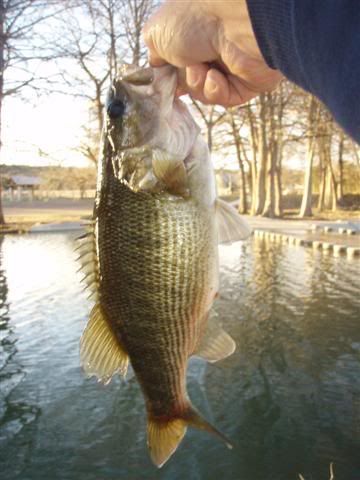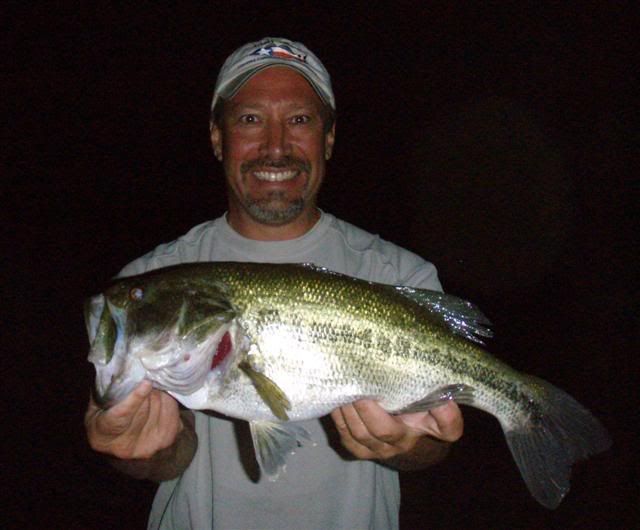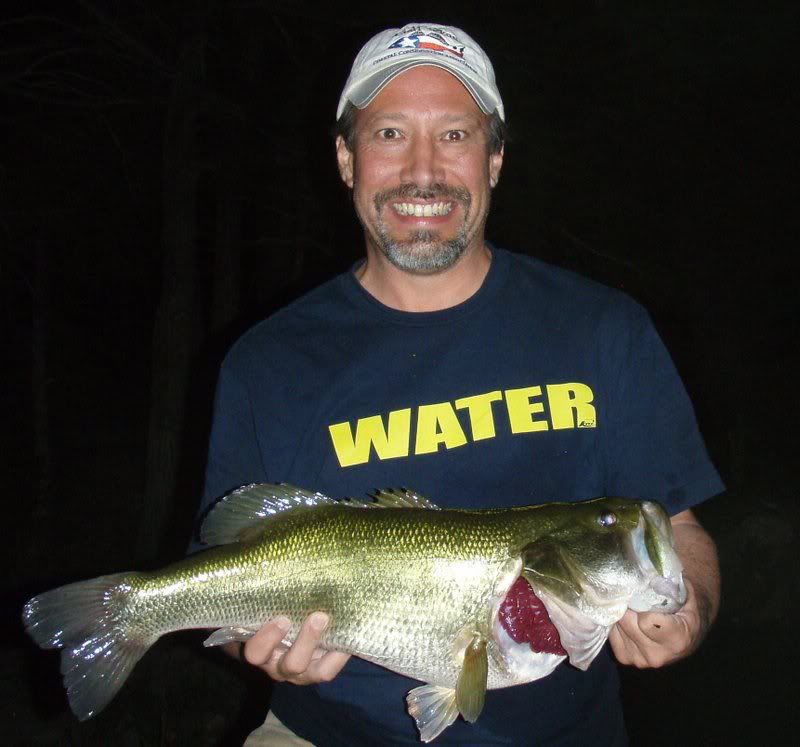Cool looking fish!
Announcement
Collapse
No announcement yet.
What kind of bass is this?
Collapse
X
-
Man! Thanks for the detailed explanation! Not only do you take amazing photos, you're a bass encyclopedia. Great looking fish too!Originally posted by AtTheWall View PostYour fish is a Guadalupe Bass, pure bred Lupe, not crossed with a smallmouth. It's a good sized fish too - Congrats! Guadalupe bass prefer rocks and moving water. In Texas Hillcountry lakes, they will hold around rock structure just like Smallmouth bass. Smallmouth bass have more bronze and or yellow hues to their scales as well as red eyes. Guadalupe bass have largemouth bass colored eyes.
Guadalupe and Smallmouth bass both fight harder than blackbass, size for size. Both Guadalupes and Smallies prefer moving water and hold hard against rocks, typically both are found at the top end of bigger river pools, where the rapids blow down and over and into the deeper slower waters behind. The largemouth prefer to hold in the middle to the back of these deeper water sections...in Hill Country streams. At times, the largemouth will swim up into the rapids but they will only do so if there are deeper sections of water with cover in this faster flowing sections of water. The smallies and lupes will run right up in mid current and work edges, largemouth prefer the edges.
Below are examples of what I'm talking about. I know my hill country river and lake bass.....I fish the Guadalupe River a lot!
Here's a Smallmouth\Guadalupe bass hybrid. They stopped stocking smallies in the Guadalupe River once they found out they can and will create a hybrid species, not desirable for the Guadalupe bass since they are only found in TEXAS HILLCOUNTRY STREAMS...which includes Lake Buchanan. Note the red eyes, smallmouth have red eyes.

Here's a Guadalupe River smallmouth pure species, not hybrid. Note the bronze colored tint versus the fish above. Also note the fish above has red eyes. Smallmouth have red eyes, and both the pure smallmouth and hybrid smallmouth\Guadalupe bass exhibit the same eye color

Another smallmouth showing a yellow\green color variation. Not as common as the bronzeback color. Also note the vertical bands that follow the fishes spine are undefined, literally tiger striped or in this fishes case, literally non-existent.

This is a toad of a Guadalupe Bass. Pure Guadalupe here, female, note the bands are very tiger striped along it's side. Black bass have a very defined green line that follow the fishes spine along the side, where as Guadalupe bass show tiger stripes. Also note the eye color and size, more like a blackbass, not smallmouth.

Here's a Black bass from the Guadalupe River. Note the green lines along it's side...they are tight, no tiger stripes, basically a solid line with jagged edges above and below the main line.

Another Blackbass from the Guadalupe river that has no horizontal green line at all. She is simply solid green along her sides with no real line, shifting to light green and white on her belly.

Comment
-
I have a meanmouth wife.Originally posted by Cantcatch5 View PostIt looks like what is called a meanmouth, which is a cross between a Kentucky and a Smallmouth. If that is what it is they are not real common and are supposed to put up a great fight.
It is definitely not a yellow bass. They are white with black stripes and a yellow tinted belly.

Comment
-
Thanks guys!
Lake Buchanan has Guadalupe Bass
Toledo Bend, Rayburn & Livingston have Kentucky spotted bass
Both species are probably sub-species of each other? Both prefer moving water and both prefer cooler water conditions. Spotted bass will hang out as deep as 80 ft during summer, beyond two thermoclines meaning they are seeking cooler water columns. The blackbass, very heat tolerant and it's rare to find them that deep anywhere. Blackbass are a dime a dozen in the first 10ft of the water column.....down below 20 - 30ft, spotties and lupes. Large largemouth bass will also drop deep and stay deep during summer but they will typically hold a bit more shallower than Lupes or Smallies.
The freshwater drum and Guadalupe bass both will stay a bit deeper than largemouth during hot summer days. Being near the rocks...crawfish are probably the primary food for both and that is the reason why both were caught near the rocks on Buchanan.
Saltwater drum are more active in the winter time.....cooler water conditions, very similar to the freshwater drum, hence the reason why freshwater drum are typically caught in deeper water near dams and rocky deep water structure during summer months. Freshwater drum come up and work shallows at night, after the summertime water temps drop a bit after sunset.Last edited by AtTheWall; 07-13-2013, 10:39 PM.
Comment




Comment